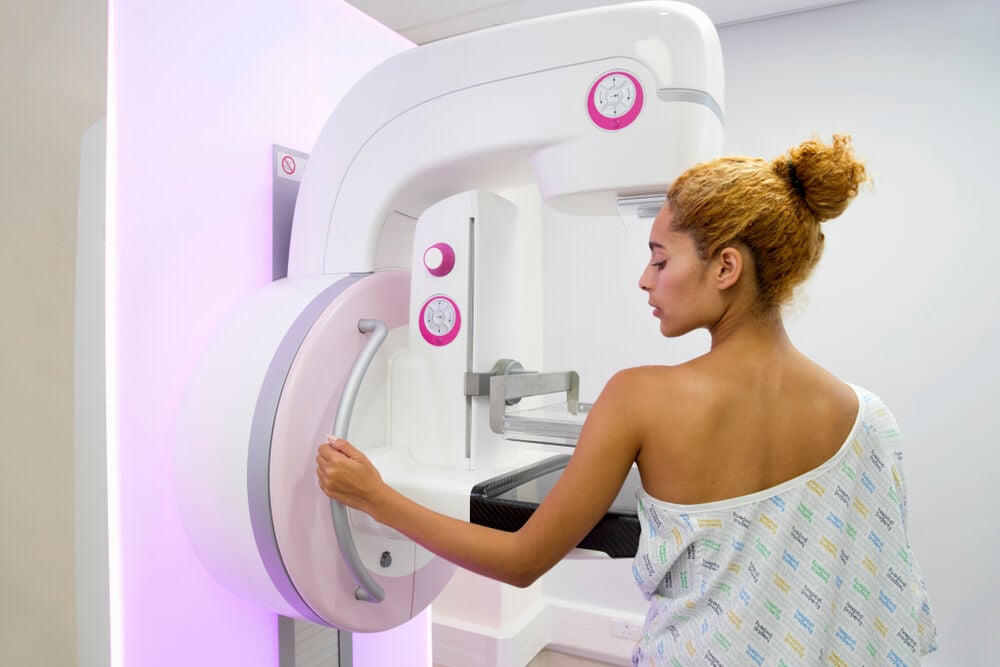October is Breast Cancer Awareness Month, and time to increase awareness of the disease. In this article, you'll learn 5 things that everyone should know about breast cancer.
-
Tracking cycle
-
Getting pregnant
-
Pregnancy
-
Help Center
-
Flo for Partners
-
Anonymous Mode
-
Flo app reviews
-
Flo Premium New
-
Secret Chats New
-
Symptom Checker New
-
Your cycle
-
Health 360°
-
Getting pregnant
-
Pregnancy
-
Being a mom
-
LGBTQ+
-
Quizzes
-
Ovulation calculator
-
hCG calculator
-
Pregnancy test calculator
-
Menstrual cycle calculator
-
Period calculator
-
Implantation calculator
-
Pregnancy weeks to months calculator
-
Pregnancy due date calculator
-
IVF and FET due date calculator
-
Due date calculator by ultrasound
-
Medical Affairs
-
Science & Research
-
Pass It On Project New
-
Privacy Portal
-
Press Center
-
Flo Accuracy
-
Careers
-
Contact Us
5 Things You Should Know About Breast Cancer

Every piece of content at Flo Health adheres to the highest editorial standards for language, style, and medical accuracy. To learn what we do to deliver the best health and lifestyle insights to you, check out our content review principles.
Breast cancer is the most common cancer in women. It develops in breast cells; usually, in the glands and in the ducts.
How it happens: when changes, or mutations, take place in the genes, the regulation of cell growth breaks down and cells begin to multiply in a chaotic way. The new cells are abnormal and form a tumor.
Risk factors
- Age. Cancer occurs more often in women between the ages of 55 and 64.
- Family history. About 5% to 10% of breast cancer cases are thought to be passed down from a parent. Women with a mother, sister, or daughter with breast cancer have double the risk.
- Taking oral contraceptives during the past 10 years in reproductive age and hormone replacement therapy in menopause.
- Reproductive history. Having the first child after 30, absence of pregnancies and breastfeeding increase the risk of breast cancer.
Breast cancer can be effectively treated, especially if it is diagnosed at an early stage. The chance of survival is over 90% for 5 years.
- Drinking alcohol is clearly linked to a high risk of breast cancer. The risk increases with the amount of alcohol consumed. Those who have two to three drinks a day have a 20% higher risk than those who don’t drink alcohol at all.
- Obesity. Being overweight or obese after menopause increases the risk of breast cancer.
Symptoms
The most common symptoms of the disease include:
- A recently developed breast lump
- Pain in the breasts
- Changes on the skin
- Swelling breasts
- Bloody nipple discharge
Take a quiz
Find out what you can do with our Health Assistant
Mammography is the main method of breast cancer detection. The method is rather sensitive and helps to suspect cancer even at the first stage.
- Unexplained growth of one of the breasts
- Sudden nipple retraction
- Swelling or recent growth of a lump under the arm.
Diagnosis
In earlier stages, the tumor is too small to be felt and has no symptoms, which makes diagnosis rather difficult. That is why the screening programs are so important. Tumor diagnosis is based on several methods: mammography, biopsy, and investigation of cells.
Mammography

Mammography is the main method of breast cancer detection. The method is rather sensitive and helps to suspect cancer even at the first stage. A mammogram is an X-ray of the breast; special Mammogram machine is used for it.
Women aged 50 to 69 should have mammograms every 2 years to check for changes in the breasts.
Women aged 40 to 49 and 70 to 75 may also have mammograms in case there are indications.
Mammograms in younger women are more difficult to read and therefore are not suggested.
Mammography is usually performed standing up. If you need to remain in a wheelchair or scooter, first check with the clinic to see if it’s possible to have a mammogram while seated since this option is not always available.
After breast cancer treatment, there are often no more problems. However, cancer can sometimes return months or years later, reappearing in the same area where cancer originally appeared or in other areas of the body. This happens because some cancer cells may survive treatment.
Biopsy
The procedure is performed if there is a suspicious area in the breast. A surgeon under X-ray control passes a needle through the skin to extract a sample of tissue for testing, then the material is sent for analysis to laboratory.
Biopsy is the only definitive way for breast cancer diagnosis.
Treatment
Breast cancer can be effectively treated, especially if it is diagnosed at an early stage. The chance of survival is over 90% for 5 years.
There are different treatments for breast cancer:
- Surgery is often done to remove the tumor.
- Radiation therapy uses high-energy rays (such as X-rays) to destroy cancer cells.
- Chemotherapy uses anti-cancer drugs to kill cancer cells or shrink the tumor.
- Other therapies, such as hormone or targeted therapy.
After breast cancer treatment, there are often no more problems. However, cancer can sometimes return months or years later, reappearing in the same area where cancer originally appeared or in other areas of the body. This happens because some cancer cells may survive treatment.
How to lower the risk
A healthy lifestyle can lower the risk of breast cancer:
- Maintaining a healthy weight will reduce risk.
- Performing moderate physical activity for at least 150 minutes a week.
- Quitting smoking.
- Limiting alcohol to no more than one drink a day.


Hey, I'm Anique
I started using Flo app to track my period and ovulation because we wanted to have a baby.


The Flo app helped me learn about my body and spot ovulation signs during our conception journey.


I vividly
remember the day
that we switched
Flo into
Pregnancy Mode — it was
such a special
moment.
Real stories, real results
Learn how the Flo app became an amazing cheerleader for us on our conception journey.




